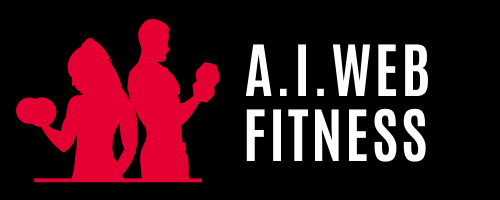To be effective an exercise program must be the cornerstone of your training strategy.
Clients turn to you, the fitness trainer, for guidance on their fitness journey
To stand out and provide exceptional value, you must understand the nuances of creating exercise programs that deliver results.
In this comprehensive guide, we’ll delve into the key aspects of building an effective exercise program that transforms clients’ lives.
Index
- Introduction
- What is it About?
- Why Do You Need It?
- What Skills and Qualifications Do I Need?
- What Are Some Of The Best Practices?
- What Are Some of the Best Kept Secrets?
- How Do You Implement It?
- How Long Does It Take for Implementation?
- Where Should I Start?
- When Do You Employ It?
- What are the Issues and Solutions?
- What are Some Common Mistakes to Avoid?
- What are the Results to Expect?
- How Long Will It Take to See Results?
- Key Takeaways
- FAQ
- Conclusion
Introduction
In this comprehensive guide, we’ll delve into the world of creating effective exercise programs that are tailored to individual needs, goals, and limitations.
Whether you’re just starting your fitness training journey or seeking to enhance your existing skills.
This article offers valuable insights and solutions that can revolutionize your approach.
Here’s what you can expect:
- Discover what it takes to design exercise programs that truly work.
- Uncover the industry’s best practices and hidden gems.
- Learn the essential skills and qualifications to become a top-notch fitness trainer.
- Gain insights into common challenges and their practical solutions.
- Understand the benefits your clients will experience from personalized programs.
- Find out when and how to implement these programs effectively.
- Avoid common mistakes and pitfalls that can hinder your success.
- Get a clear timeline for when clients can start seeing tangible results.
- Benefit from key takeaways that summarize the critical points.
This article will equip you with the knowledge and tools to guide them on their fitness journey effectively.
The knowledge of how to find clients for online personal training is a crucial aspect of your success.
What is it About?
Creating an effective exercise program is the cornerstone of success in fitness training.
It revolves around the art of meticulously crafting workout routines that are precisely attuned to your clients’ unique goals and individual needs.
The essence of this process lies in its personalization.
Each exercise regimen is a carefully woven tapestry, reflecting the aspirations and capabilities of the client.
Your clients are on a quest for weight loss, seeking to sculpt their bodies through muscle gain, or simply aiming to enhance their overall wellness.
An effective exercise program is the compass guiding them towards their desired destination.
- It’s not a one-size-fits-all approach.
- It’s a bespoke roadmap, tailored to navigate each client’s fitness journey with precision.
- It’s about understanding the nuances of your clients’ ambitions, their physical capabilities, and even their limitations.
- It’s about crafting programs that not only challenge but also inspire and empower.
The true beauty of creating an effective exercise program lies in its transformative potential.
Aspirations become achievements, and clients embark on a journey towards their best selves.

Why Do You Need It?
As a fitness trainer, understanding why you need to offer tailored exercise programs is pivotal for your success and the satisfaction of your clients.
Here’s why:
Client Satisfaction:
Customized exercise programs cater to the unique goals and needs of each client.
When clients see that their fitness journey is personalized just for them, it boosts their satisfaction levels significantly.
Retention:
Effective exercise programs play a crucial role in client retention.
When clients experience visible results, they’re more likely to continue their training with you over the long term.
This not only secures a steady income but also fosters a loyal client-trainer relationship.
Word-of-Mouth Referrals:
Clients who achieve their fitness goals through your tailored programs become your best advocates.
Satisfied clients are more inclined to recommend your services to friends and family, expanding your client base organically.
Competitive Edge:
In a competitive fitness training landscape, offering personalized exercise programs sets you apart.
It demonstrates your commitment to clients’ success and positions you as a trusted fitness expert.

What Skills and Qualifications Do You Need?
To excel in creating effective exercise programs, fitness trainers need a specific set of skills and qualifications.
This enable them to provide top-notch guidance to their clients.
Here are the key attributes and qualifications required:
In-depth Knowledge:
A solid understanding of various workout techniques, nutrition principles, and fitness fundamentals is essential.
This knowledge forms the foundation upon which effective exercise programs are built. It enables trainers to design workouts that align with clients’ goals and needs.
Communication Skills:
The ability to communicate instructions clearly and effectively is paramount.
Fitness trainers must convey exercise techniques, dietary guidelines, and motivational messages in a way that clients can easily understand and follow.
Clear communication fosters trust and commitment.
Adaptability:
The fitness landscape is dynamic, and clients’ needs can evolve over time.
Fitness trainers must be adaptable and flexible in modifying exercise programs to accommodate changing circumstances.
This adaptability ensures that clients receive tailored support throughout their fitness journey.
These skills and qualifications empower fitness trainers to create exercise programs that drive results and inspire their clients to achieve their fitness goals.
By combining in-depth knowledge, effective communication, and adaptability, fitness trainers can truly excel in their profession.

What Are Some Of The Best Practices?
To be effective an exercise program must be:
Personalize:
Industry best practices emphasize the importance of tailoring exercise programs to meet the unique needs and objectives of each client.
This means understanding their fitness goals, abilities, and any limitations they may have.
By crafting personalized programs, you ensure that clients receive workouts that align perfectly with their aspirations.
It makes them more likely to stay motivated and committed.
Progress Tracking:
To be effective an exercise program must be involve in ongoing assessment of client progress.
This entails regularly monitoring their performance, measuring results, and analyzing their journey.
By doing so, you can identify what’s working and what needs adjustment.
Tracking progress enables you to fine-tune workouts and nutrition plans, ensuring that clients continually move closer to their goals.
Communicate:
Maintaining open and consistent communication channels with clients is a cornerstone of industry best practices.
It’s not just about providing exercises and meal plans; it’s about being there for your clients throughout their fitness journey.
Regular communication allows you to offer guidance, answer questions, and provide motivation.
This personalized approach fosters trust and commitment, making you not only a trainer but also a source of unwavering support.
By adhering to these industry best practices, you’ll create effective exercise programs.
You will also build strong, lasting relationships with your clients, setting the stage for their success.

What are Some of the Best Kept Secrets?
Successful fitness trainers often emphasize the importance of:
Consistency:
The cornerstone of success in fitness training lies in maintaining consistent workouts and strict adherence to nutrition plans.
This isn’t a hidden secret, but it’s often underestimated.
Consistency ensures that your clients steadily progress towards their goals.
Skipping workouts or indulging in occasional dietary splurges can hinder results.
Encourage your clients to stay on track and be consistent with their exercise routines and nutritional choices.
Variety:
While it’s not a well-guarded secret, it’s an essential aspect of successful fitness training.
Incorporating a variety of exercises into your clients’ routines is vital.
Doing the same exercises repeatedly can lead to plateaus where progress stalls.
By introducing diverse exercises, you challenge different muscle groups, prevent boredom, and keep clients engaged.
Emphasize the importance of variety to keep workouts fresh, exciting, and effective.
In essence, these “secrets” are the fundamental principles that successful fitness trainers prioritize.
By emphasizing consistency and variety, you can help your clients achieve their fitness goals more effectively.
It also helps maintain their motivation throughout their journey.

How Do You Implement It?
Follow these steps to implement effective exercise programs:
Client Assessment:
To kickstart your journey in creating effective exercise programs, start by thoroughly understanding your clients.
This involves delving into their:
fitness goals
current fitness levels
any pre-existing health conditions
their unique limitations or preferences.
The more you know about your clients, the better you can tailor their programs to meet their individual needs.
Program Design:
Once you’ve gathered essential client information, it’s time to design a customized workout plan and provide guidance on nutrition.
Ensure the exercises and dietary recommendations cater to their goals, whether it’s weight loss, muscle gain, or overall wellness.
These programs should be carefully crafted to align with your clients’ specific objectives.
Regular Monitoring:
To be effective an exercise program must be consistent tracking of client progress.
Regularly assess your clients’ advancements by monitoring their performance and physical changes.
This step ensures that your programs remain on track and allows you to make timely adjustments to optimize their fitness journey.
Communication:
Maintain open and prompt communication with your clients.
You will need to be accessible and responsive to their questions, concerns, and feedback.
An effective communication fosters trust and commitment.
It makes clients feel supported and motivated throughout their fitness journey.
Adaptation:
One size doesn’t fit all in fitness training.
As your clients progress and provide feedback, be prepared to adapt their programs accordingly.
Modifications may be necessary to address changing goals, challenges, or preferences.
Flexibility in program adjustments is key to ensuring ongoing success.
By following these steps, you’ll be well on your way to implementing effective exercise programs.
It will empower your clients to achieve their fitness goals while building a strong and lasting trainer-client relationship.

How Long Does It Take for Implementation?
Clients can expect to see initial improvements in a few weeks.
However, long-term success in fitness training depends on their dedication and your ongoing guidance.
Tailoring programs to individual goals and continuously motivating clients are essential elements in achieving sustainable fitness transformations.
Initial Results in a Few Weeks:
After implementing a personalized exercise program, clients can expect to see initial results within just a few weeks.
This might include improvements in strength, stamina, and energy levels.
These early victories can boost motivation and confidence, driving clients to stay committed to their fitness journey.
Long-Term Success Requires Consistency:
While initial results are encouraging, long-term success hinges on clients’ commitment and consistency.
Consistency is the key to achieving and maintaining fitness goals.
Clients must adhere to their exercise and nutrition plans over an extended period.
This will bring them to experience lasting changes in their physique and overall well-being.
Individual Variations:
The exact timeline for achieving specific goals may vary from person to person.
Factors such as starting fitness level, age, genetics, and adherence to the program all play a role.
These elements determine how quickly clients will see substantial progress.
Ongoing Support and Monitoring:
As a fitness trainer, it’s essential to provide ongoing support and monitor your clients’ progress.
Regular check-ins, adjustments to their program, and motivational encouragement are vital components.
These components ensure they stay on track for long-term success.
Setting Realistic Expectations:
When working with clients, it’s crucial to set realistic expectations regarding the pace of progress.
Explain that sustainable changes take time and effort.
Encourage them to focus on the journey rather than immediate results, as this mindset shift can lead to better long-term adherence.

Where Should You Start?
Starting with a strong understanding of your clients’ goals and limitations.
Customizing their exercise program accordingly is the foundation for successful fitness training.
It sets the stage for a collaborative and results-driven fitness journey.
Understanding Client Goals:
Begin by engaging in a thorough discussion with your clients.
Understand their fitness aspirations, whether it’s shedding pounds, gaining muscle, or enhancing overall health.
Encourage them to articulate their goals clearly.
Assessing Fitness Levels:
After knowing their goals, assess your clients’ current fitness levels.
Determine their strengths, weaknesses, and any physical limitations or medical conditions that may impact their training.
Personalized Approach:
The key to success lies in personalization.
Tailor the exercise program to suit each client’s unique needs, preferences, and abilities.
Remember, to be effective an exercise program must be personalized; as a one-size-fits-all approach rarely delivers optimal results.
Goal Alignment:
Ensure that the exercise program aligns perfectly with your client’s objectives.
If they aim to build strength, incorporate strength training exercises.
For weight loss, focus on cardiovascular workouts and calorie management.
Progress Tracking:
Implement a system for tracking progress.
This could involve regular measurements, fitness assessments, or performance benchmarks.
Tracking helps you make informed adjustments to their program as they advance.
Communication is Key:
Maintain open and effective communication with your clients.
Address their questions, concerns, and preferences.
A two-way dialogue ensures that the exercise program remains a collaborative effort.
Periodic Reviews:
Periodically review and reassess the exercise program.
As clients progress, their goals and capabilities may evolve.
Be ready to make necessary modifications to keep their journey effective and engaging.
Educate and Empower:
Alongside the workouts, educate your clients about the principles of fitness and nutrition.
Empower them with knowledge that fosters self-sufficiency in maintaining a healthy lifestyle.
When Do You Employ It?
Employing effective exercise programs right from the beginning of your client-trainer relationship is the key to success.
It establishes a strong foundation, aligns goals, keeps clients motivated, and ensures early progress.
By doing so, you set your clients on a path to achieve their fitness aspirations.
It builds a lasting, trusting relationship with them.
From the Start:
It’s crucial to introduce effective exercise programs right at the beginning of your client-trainer relationship.
Client Engagement:
Starting with effective programs keeps clients engaged and committed.
It prevents the feeling of aimlessness and increases their sense of purpose in their fitness journey.
Motivation Boost:
When clients witness early progress, it boosts their motivation.
It’s a powerful reminder that their efforts are paying off, reinforcing their commitment to the program.
Preventing Plateaus:
Effective exercise programs are designed to prevent plateaus by offering varied and challenging workouts.
Starting with these programs ensures clients won’t hit a performance wall too soon.
What are the Issues and Solutions?
Addressing common issues with effective solutions, fitness trainers can keep clients on track and motivated.
It helps them to consistently progress toward their fitness goals.
It’s all about adapting and supporting clients through their fitness journey for long-lasting success.
Common Issues in Exercise Programs:
Client Plateauing:
It’s not uncommon for clients to reach a point where their progress stalls.
This plateau can be frustrating and demotivating.
Loss of Motivation:
Over time, some clients may lose their initial enthusiasm.
It makes it more challenging to stick to their exercise routine.
Effective Solutions:
Program Adjustments:
To combat plateauing, fitness trainers should regularly reassess and modify exercise programs.
Changing workout routines, increasing intensity, or introducing new exercises can help break through plateaus.
Motivational Support:
Maintaining consistent communication with clients is essential.
Offering words of encouragement, acknowledging their achievements, and setting achievable milestones can reignite motivation.
Variation:
Introduce variety into workouts to keep them engaging.
Incorporate different exercises, training methods, or challenges to prevent boredom.
Goal Reassessment:
Periodically review and adjust clients’ goals based on their progress and evolving fitness aspirations.
Nutritional Guidance:
Addressing clients’ nutrition is often crucial.
Help them maintain a balanced diet to support their fitness goals.
Mindset Coaching:
Sometimes, mental barriers can hinder progress.
Offer guidance on developing a positive mindset, resilience, and the importance of consistency.

What are Some Common Mistakes to Avoid?
One Size Fits All Programs:
Designing generic workout plans that do not consider individual goals, abilities, and limitations can hinder progress.
Customization is key to ensuring that each client’s unique needs are addressed for optimal results.
Neglecting Progress Tracking:
Failing to regularly assess and track client progress is a missed opportunity for fine-tuning their programs.
Regular assessments provide valuable insights into what’s working and what needs adjustment.
Ensure that clients stay on the right track.
Lack of Communication:
Maintaining open and consistent communication with your clients is crucial.
A lack of engagement can lead to demotivation and hinder their commitment to their fitness journey.
Regular interaction allows you to provide guidance and answer questions.
Offer motivation, create a supportive and successful training experience.
Avoiding these common mistakes, fitness trainers can create a more personalized and effective training environment.
This leads to better outcomes for their clients.

What are the Results to Expect?
Improved Fitness:
Clients can anticipate significant improvements in their overall fitness level.
Weight Loss:
If weight loss is their goal, they can expect to shed pounds gradually and sustainably.
Muscle Gain:
Those aiming to build muscle will notice increased muscle mass, strength, and tone.
Enhanced Wellbeing:
Exercise programs promote better mental health, increased energy, and improved mood.
Individual Goals:
Results are tailored to individual goals, ensuring that clients achieve what they set out to accomplish.
Consistency Matters:
The key to realizing these results is consistency—adhering to the program diligently.
Setting realistic expectations is crucial in any fitness journey.
By maintaining a commitment to their fitness goals, clients can experience transformative results in their health and wellbeing.
How Long Will It Take to See Results?
Results Timeframe:
It’s essential to set realistic expectations.
Generally, visible results in fitness training become noticeable within 4 to 8 weeks.
Clients have to consistently follow their tailored exercise programs.
Consistency Matters:
Consistency is key to seeing progress.
Clients who stick to their workouts, nutrition plans, and lifestyle adjustments are more likely to experience early results.
Long-Term Commitment:
While initial changes can be seen within weeks, achieving long-term fitness goals requires ongoing dedication.
Encourage clients to view their fitness journey as a lifelong commitment to health and wellness.
Individual Variations:
Keep in mind that results vary from person to person.
Factors like genetics, starting fitness levels, and specific goals can influence the rate of progress.
Adjustments and Monitoring:
As a fitness trainer, regularly monitor and assess clients’ progress.
Adjust their exercise programs as needed to ensure they continue to make strides toward their goals.
Understanding these timelines and emphasizing the importance of consistency are key.
By doing so, you can guide your clients effectively on their fitness journey, helping them achieve the results they desire over time.

Key Takeaways:
Personalization is Paramount:
Tailor exercise programs to each client’s unique goals, abilities, and limitations.
This approach yields the best results.
Regular Progress Tracking:
Continuously monitor and assess client progress to adapt and optimize their training plans accordingly.
Clear Communication:
Maintain open and prompt communication with clients to address their questions and provide guidance.
This approach helps keep them motivated and engaged.
Consistency is Key:
Encourage clients to stay consistent with their workouts and nutrition plans.
Making lifestyle adjustments is also crucial to see visible results.
Long-Term Commitment:
Initial changes can be seen within weeks.
However, remind clients that achieving long-term fitness goals requires ongoing dedication and commitment.
Individual Variations:
Understand that results vary from person to person due to factors like genetics and starting fitness levels.
Adaptation and Monitoring:
As a fitness trainer, regularly adjust exercise programs based on client feedback and progress to ensure continued success.
FAQ:
To be effective an exercise program must be personalized, that monitors progress, maintains consistency, and adapts to individual needs and goals.
It should include aerobic exercise, strength training, and flexibility exercises for cardiovascular health and weight management.
- Personalization: Tailoring workouts to your unique goals.
- Consistency: Regularly following your exercise routine.
- Progress Tracking: Monitoring and adjusting your plan.
- Nutrition: Pairing exercise with a balanced diet.
- Long-Term Commitment: Viewing fitness as a lifelong journey.
Consult Your Doctor: Begin by discussing your fitness goals and plans with your doctor for safety and guidance.
Select Aerobic Activities: Choose aerobic exercises to benefit your heart and lungs.
Incorporate Strength Training: Include strength-building exercises in your routine.
Set a Schedule: Create a workout schedule that fits your lifestyle and commitments.
To get fit fast, consider these tips:
- Add yoga or Pilates.
- Incorporate incidental exercise.
- Set realistic goals.
- Watch alcohol intake.
- Consider running.
- Try HIIT workouts.
- Have fun.
- Partner up for motivation.
Conclusion:
Creating effective exercise programs is more than a skill. It’s an art. This art transforms goals into results.
It shapes workouts to fit individual dreams. It leads clients to better health.
An exercise program needs to fit each client’s unique needs.
It should track progress and keep communication open.
Consistency is key.
Commitment to long-term fitness is vital.
Programs should celebrate individuality and stay flexible to optimize results.
By following these principles, trainers and clients can achieve health and fitness.
The journey matters as much as the end goal.
With dedication and personalized guidance, remarkable results are within reach.
So, let’s celebrate the art of creating effective exercise programs.
It’s a journey of transformation and empowerment!

